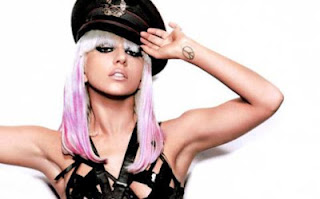They say clothes make the man. They can also make the laugh, if you're giving a humorous presentation, or even simply making a humorous point within the speech. There are many pitfalls to costuming, but when used correctly, what you wear can make your speech all the more memorable, and all the more effective, for your audience.
The first thing to think about, in terms of any speech, is the audience. Is costuming appropriate at all? Do they expect it? Will it affect your credibility? Is your meeting planner OK with it?
The second consideration is whether or not the costuming makes a significant contribution to the speech, humor, or significant point. If you just like wearing a Superman cape because you think it's cool, you're not doing yourself any favors. If you're using it during a specific point of the talk to enhance a character or add a dramatic/comedic flair, go for it!
Thirdly - does your costuming have to be seen throughout the entire speech? There's a big difference between wearing a cowboy hat or clown nose through an entire speech versus bringing them out at an appropriate time. If your costume involves an outfit, do you need a tear-away outfit over it, or are you willing to wear those marathon shorts on stage for 30 minutes?
5 Ways to Costume For Humor
A. Exaggerated Character: If you're coming out as someone other than yourself to entertain an audience, dressing the part is always appropriate. Unless you're trying to be an impersonator, however, taking the costuming to a level of exaggerated silliness - with makeup, shoes, oversize outfits with padding - will help cue the audience that you are lampooning a character, and encourage earlier and more intense laughter.
B. Out of Character Character: If you're in front of an audience that knows you one way, and you come out dressed in an unexpected outfit (CEO dressed as a basketball player, conservative older person in a decidedly non-age appropriate outfit), you can get the audience laughing before you say a word. Once you DO say a word, your costuming better make sense, though, or the audience will be lost.
Be careful how far you take a joke, however. Religious and political costuming is always iffy, and Ted Danson can attest to the perils of appearing in 'blackface' in the modern age (anytime after 1930, really), so racial costuming should not be in your repertoire. In all cases, research your audience.
E. Hidden Costuming: Desperate to use the cape no matter what? Want to reveal that Yankees uniform at just the right moment? Wearing boxers with the company logo? Make sure that your timing is appropriate, your ability to reveal is flawless, and your ability to get your pants back on unfettered.
One of my favorite costuming effects was a speaker wearing a hospital gown for the entire speech, his bare feet and ankles apparent. It created tension for the audience as we wondered if he was wearing anything under it, and when he got to the inevitable joke about how breezy hospital gown are, he turned around, wearing bright yellow, silk smiley boxers, and took a bow. The laughter was loud and long.
Costuming isn't always humorous - sometimes it's used to create a character for serious purposes, to relive an event, to add credibility (wearing a pilot's uniform), to identify with local sports teams, or just to show individuality (Think Dennis Rodman/Lady GaGa).
When done right, your costume will help you hit a home run. When done wrong, it becomes worse than a wardrobe malfunction - it'll sabotage your entire presentation. Practice your costuming, run it by other speakers or your speaking coach, and make sure your meeting planner is prepared for it. Now, go get your spandex tights on and Speak....& Deliver!





No comments:
Post a Comment